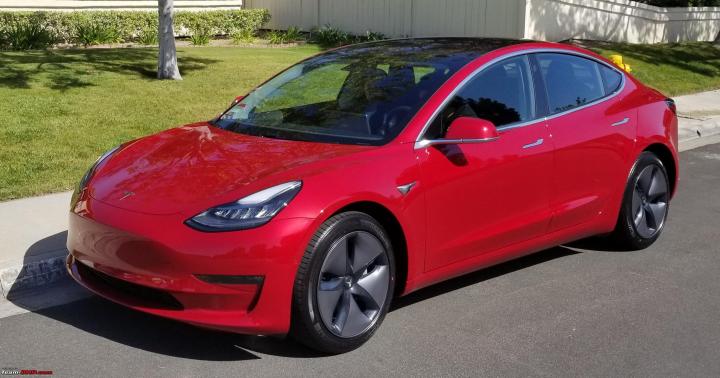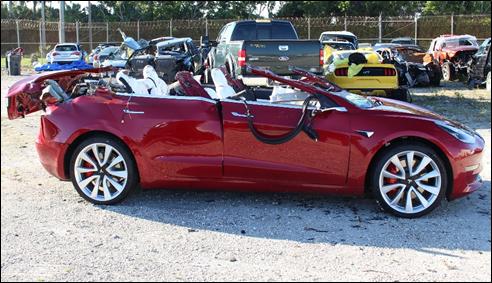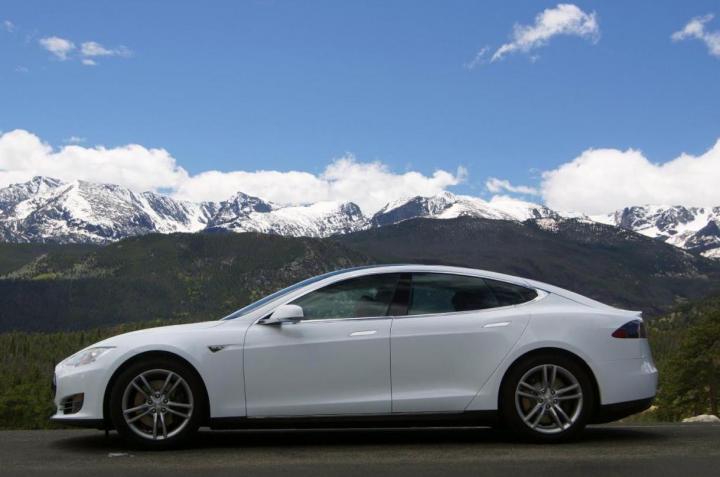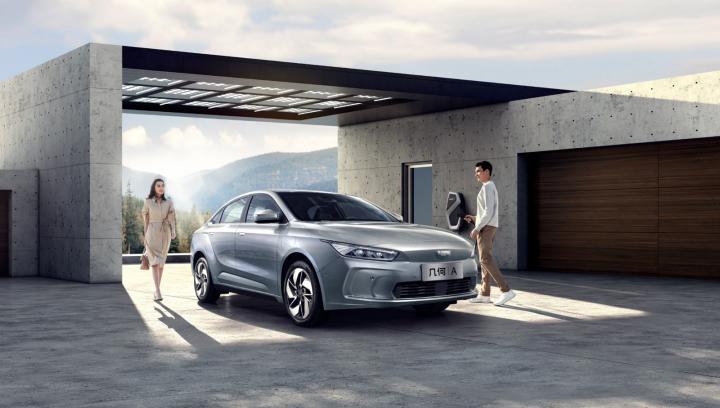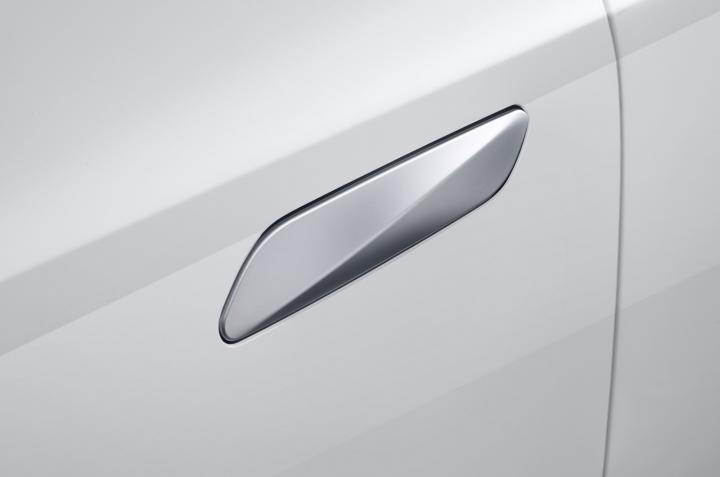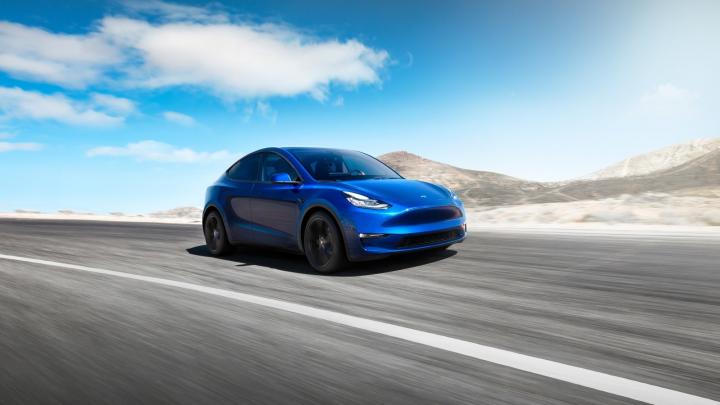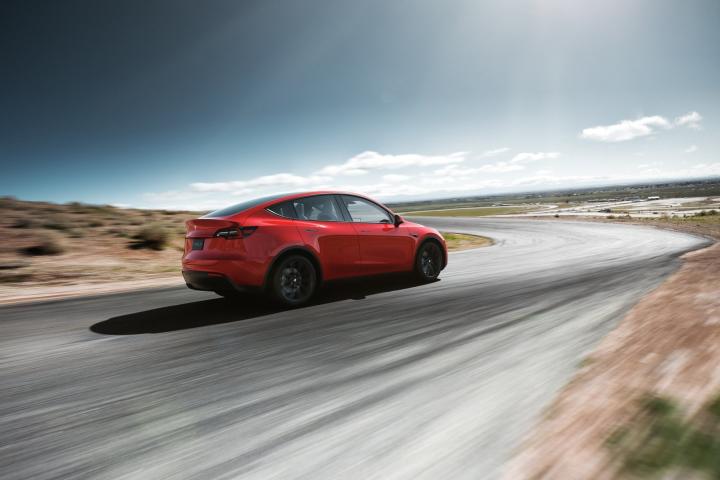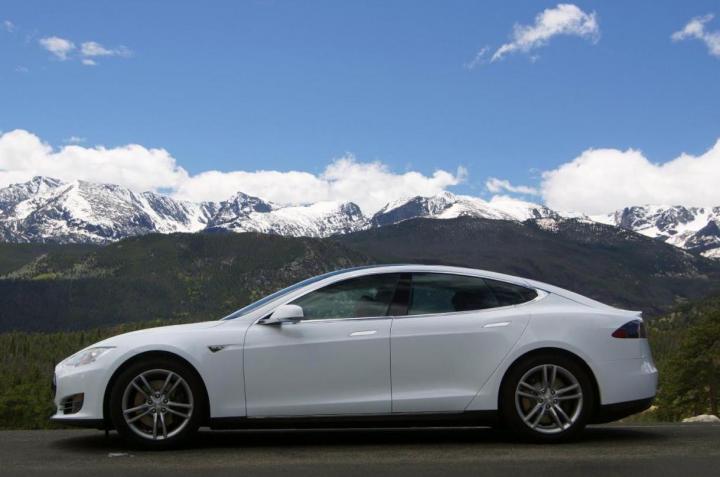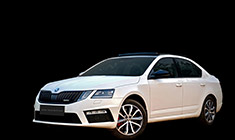News
Musk: Tesla would like to be in India in 2020
According to a media report, Elon Musk plans to bring Tesla to India by 2020.
IIT Madras' Avishkar Hyperloop team, which was part of the finals of the SpaceX Hyperloop Pod competition held on July 21, 2019 had asked Tesla CEO Elon Musk about his plans to bring the electric vehicle (EV) brand to India. In response, Musk said that Tesla could arrive in India in a year's time.
This is not the first time the EV maker has hinted at a possible entry into the Indian market. In March 2019, Musk had tweeted that he would love to be in the country in 2019 or next year. Musk had expressed his willingness to launch Tesla in India, but had also said that FDI (Foreign Direct Investment) rules and other government regulations were one of the reasons for the delay.
Earlier this year, Tesla started construction on its first factory outside the USA in Shanghai, China. Once complete, it is expected to produce 500,000 cars annually. The report states that this could also help India, as getting cars from China would be easier than from USA.
Source: Economic Times
News
Tesla delivered record number of cars in Q2 2019
According to a media report, Tesla has reported a record number of deliveries during the last quarter. 95,200 cars were delivered during the second quarter of 2019. Out of these, the Model 3 accounted for 77,550 units. Tesla is also reported to have received more orders than the number of cars it delivered. The carmaker's stock rose by 7%.
In comparison, Tesla delivered 40,740 cars during the same quarter last year and 63,000 cars in the first three months of 2019. Tesla's deliveries fell during the first quarter of the year and the carmaker attributes this to logistical issues as it began deliveries of the Model 3 globally. The company claims to have streamlined the shipping and delivery process. It is said to be in a position to increase production and deliveries further, even though other car manufacturers have started introducing electric cars of their own.
Tesla reported a loss of US$ 702 million in the first quarter of 2019. While the earnings of the second quarter are not known, the company is expected to post its first profit of 2019 in the third quarter of the year.
Source: CNN Business
- Tags:
- Indian
- Tesla
- Tesla Motors
- Model 3
- Sales
News
NTSB links Tesla crash to Autopilot; 3rd such fatal accident
The National Transportation Safety Board (NTSB) has released a preliminary report on a fatal Tesla crash that happened in Delray Beach, Palm Beach County, Florida.
The incident occurred on March 1, 2019 at 6:17 am when the Tesla Model 3 was on the southbound right through lane of State Highway 441. The car collided with a semi-trailer that was crossing the highway to make a left turn and join the northbound lanes. The footage from nearby surveillance cameras and Tesla’s front camera reportedly shows the semi-trailer slow down in front of the Tesla, blocking its path. The car underrode the trailer after striking the left side and came to a halt 488 m from the crash site. The 50-year old male driver died due to the crash. The driver of the semi-trailer was uninjured.
The NTSB report also states that the Autopilot (autonomous system) on the Tesla was active at the time of the crash. The driver had engaged the system 10 seconds before the impact and in the last 8 seconds, the driver's hands were not detected on the steering wheel. There was no attempt to avoid the crash by the driver or the Autopilot system. The vehicle was travelling at 109 km/h when the accident occurred.
This is just the preliminary report and investigation on other factors like the actions of the driver of the tractor-trailer, highway conditions, survival factors amongst others will continue. NTSB further added that probable cause has not been determined. The cause which will help issue safety recommendations to prevent similar crashes.
In 2017, the NTSB revealed that over-reliance of technology lead to a crash that killed a Tesla driver on May 7, 2016. A second fatal accident occurred on March 2018, which involved a Model X in Autopilot mode in Mountain View, California.
News
Tesla seeks to raise US$ 2.3 billion for expansion
Tesla has announced that the company will be raising US$ 2.3 billion by sales proceeds of shares and convertible debt. The funds will be used to strengthen the balance sheet as well as for general corporate purposes.
The electric carmaker is setting up a production facility in China, updating its US retail network and developing new models like the Model Y SUV and the electric semi truck as well. The need for extra funds came up after Tesla reported a first quarter loss of US$ 702 million.
Tesla plans to raise US$ 650 million in form of new shares and US$ 1.35 billion in debt. Additionally, underwriters would get an option to buy an additional 15% of each offering. CEO Elon Musk will also be pledging US$ 10 million. After this announcement, Tesla's share price increased marginally.
News
Geely launches Geometry EV brand to rival Tesla
Chinese company Geely Auto Holdings has announced an all-electric brand called Geometry. The company has also revealed its first model under the new brand called Geometry A. It offers upto 500 km of range on a single charge and will be priced between US$ 31,250 and US$ 37,200 in China.
The Geometry A gets sweptback headlights with DRL lights, C-shaped design on the bumper edges and a hexagonal air dam at the front. The side profile reveals a strong shoulder line, flush-sitting door handles, creases on the lower part of the doors and petal design alloy wheels. At the back it gets slim tail lamps and a dual tone bumper.
The insides get a two-colour theme in black and beige with some grey elements, dual spoke multi-function steering wheel, a large touchscreen infotainment, fully digital driver MID and a head-up display.
The powertrain is rated at 161 BHP and 250 Nm of torque. The standard range car comes with a 51.9 kWh battery while the long-range model comes with a 61.9 kWh module. The company claims NEDC ranges of 410 km and 500 km respectively. The 0-100 km/h time is claimed to be 8.8 seconds while the battery can be fast-charged from 30%-80% in half an hour.
Some of the safety features include ESP, automatic emergency braking with pedestrian detection, intelligent high beam control, a roof with weight bearing capacity of 4.12 times its own weight and a 100-0 km/h braking distance of 37.1 meters. It is also equipped with a 360-degree camera system along with adaptive cruise control, front and rear collision warning, lane change assist and blind spot detection amongst others.
Geely claims that they have already received 27,000 orders for the Geometry A, of which, 18,000 are from Singapore, Norway, France etc. Geely plans to launch 10 new electric models under the Geometry brand by 2025.
News
FCA to pay Tesla to allow the EVs to be counted in its fleet
According to a media report, Fiat Chrysler Automobiles (FCA) will pay Tesla hundreds of millions of euros to allow the electric carmaker’s vehicles to be counted in its fleet to meet new EU emission norms.
FCA formed an open pool with Tesla on February 25, 2019. This will allow the Italian carmaker to bring down its average CO2 level with the help of Tesla’s electric cars to a permissible level. The European Union (EU) will target an average of 95 gm / km of CO2 emissions from the next year. The 2018 average was 120.5 gm / km, while FCA averaged 123 gm / km.
The emission rules in Europe allow pooling of emissions internally, allowing carmakers like Volkswagen to offset Seat, Skoda and VW emissions against those from Porsche and Audi. While the rules also allow rival companies to form pools, there have been no pool agreements until now. Reports suggest that Toyota and Mazda are also likely to form an open pool.
It is also reported that Tesla generates significant revenue by selling EV credits in the US. In 2018 and 2017, the company earned US$ 103.4 million and US$ 279.7 million respectively by selling credits.
Source: Financial Times
News
Tesla unveils all-electric Model Y crossover
Thanks to BHPian carmayogi for sharing this information with other enthusiasts.
Tesla has just taken the covers off its new Model Y Crossover-SUV at an event in California. This car represents the completion of the rather amusingly named Tesla line-up with the S, 3, X and now Y spelling out a word that makes the inner child inside Elon Musk giggle. If you haven’t gotten it already, he wanted the Model 3 to be the Model E. For those of us less interested in such humour and more interested in cars, the question is this: What is this vehicle and what does it mean for Tesla?
The Backstory
Tesla is the world’s largest producer of battery electric vehicles and of the batteries that go into them. 2018 was arguably the most chaotic year in their relatively brief history as a company. During this past year, Tesla has ramped up production of the Model 3 sedan and catapulted from a niche high-end brand to a relatively mass market one. To put things into perspective, the Model 3 is in the identical price bracket to the BMW 3 series here in the United States.
Producing a car en-masse is something that Tesla has struggled with. Naturally, the likes of Toyota and Honda did not get where they are overnight. Tesla faced numerous problems with speeding up production and controlling costs. Towards the end of the year, they struggled with deliveries and logistics of getting cars to everyone. By the time 2018 wound to a close and the dust settled, Tesla emerged with approximately 140,000 Model 3s sold in the United States. The second best selling car of that size and price was the Mercedes-Benz C-Class. That sold just over 60,000 units in the same time period. Whichever way you paint it, the year was a staggering success. Any company that outsells thoroughly capable and compelling vehicles like the C-Class, the BMW 3 Series and the Audi A4 deserves a pat on the back. To add to this, Tesla posted their first back-to-back quarterly profits ever, although the year was still loss making as a whole. During the Model Y launch, Elon Musk made it a point to mention that Tesla has produced around 550,000 cars, something he seemed very proud of.
Crossover Mania
While all of the above sounds rather good, the US is SUV crazy. At the same time, the Compact SUV/Crossover market is literally on fire in the global market. India is no exception with the likes of the Hyundai Creta and Jeep Compass getting more love from the market than similarly sized and priced sedans. In the US market, Crossovers accounted for 38.5% of sales in 2018 compared to just 13% for “Small” cars and 10.9% for “Mid-sized” cars. Tesla’s launch is thus positioned to take it to even greater heights as the dominant player in the global electric car market. The use of inverted commas is not accidental - the American definition of sizes is a fair bit larger than what counts for small in India!
What Is The Tesla Model Y?
The Tesla Model Y is a 5 or 7 seat Compact Crossover/SUV based on the same platform as the Model 3. You can essentially call it a raised Model 3 - it certainly looks that way. To these eyes, it looks rather good, managing to do the coupe-crossover better than many previous attempts by other companies. That said, it does look a bit too much like the Model 3. We can only guess that the different shape and silhouette will help people differentiate the two.
Between the Models S & X, Tesla’s larger sedan and SUV, part sharing was less than desirable, mostly restricted to the powertrain. However, the Models 3 & Y share 75% of their components with body being the only major difference. Mechanicals, electronics, interior trim and the giant center screen are all identical. This of course is nothing new in the industry. The Audi A4 and Q5 share a similar platform, for example. This also immediately identifies where the Model Y fits on the automotive food chain - it is meant as a direct competitor to the Audi Q5, the BMW X3 and the Mercedes-Benz GLC - cars that us Team-Bhpians are very familiar with. It will also compete with recently launched electric SUVs in the form of the Jaguar i-Pace, the Audi e-tron and the Mercedes-Benz EQC.
Under The Hood
Well, amusingly, there’s actually nothing under the hood of the Model Y, or in fact any Tesla. You will find the ‘frunk’ or front trunk - an additional storage area good for a few soft bags or your charging cables.
Jokes aside, as an electric vehicle, the Y has either one or two rather small, but immensely powerful motors, depending on the model. The performance numbers are all ridiculous for a compact SUV and result in 0-100 km/h times of between 3.5 and 6.0 seconds. What truly sets electric vehicles apart is the instantaneous response you get. Forget turbo lag, there’s not even any throttle lag to speak of. We fully expect the Model Y to follow these same traits that have made Tesla cars the stars of numerous YouTube videos and drag races.
The juice for these motors comes from the battery pack located in the middle of the car. Like many new electric platforms, this involves a sort of skateboard between the front and rear wheels, which allows the batteries, and weight, to sit quite low in the vehicle. At launch, the Model Y appears to be equipped with the same battery options as the Model 3, which ranges from 50 to 75 kWh in capacity. There is, however, no mid-range option like in the Model 3, so it is likely that the base model will be equipped with a 62 kWh battery pack instead. These details are yet to be announced officially by Tesla.
Pricing and variants
At launch, these are the prices announced.
- Standard Range, 230 miles, $39,000, 0-60 mph in 5.9 seconds
- Long Range, 300 miles, $47,000, 0-60 mph in 5.5 seconds
- Dual Motor Long Range, 280 miles, $51,000, 0-60 mph in 4.8 seconds
- Dual Motor Performance, 280 miles, $61,000, 0-60 mph in 3.5 seconds
- A seven-seat option is available at $3000 extra
Other Important Details
- Drag coefficient of 0.23 cd: Almost unheard of low number for an SUV
- On sale now for $2500 reservations in the US
- Late 2020 production for higher priced version, 2021 for standard range.
- Supercharging V3 capable, up to 250 kW peak charging
- Autopilot & Full Self Driving hardware available
Autopilot
You cannot talk about Tesla without mentioning their Autopilot semi-autonomous driving capability. Currently, their cars can manage highways fairly well, managing speed, distance from other cars and lane keeping. The Model Y is equipped with all the latest features from the company and if Elon Musk’s timeline holds true then Full Self Driving capability will roll out by the end of 2019.
It is very important to note that this capability does not imply a fully ready system. It simply means that the hardware can do the job. Meanwhile, as Tesla collects data from all its cars, the software will keep receiving updates, as they are able to ‘train’ their system better and better. As of the writing of this post, whenever a human intervenes or takes over from the autopilot, Tesla receives a log with all the information and video from that specific incident. This allows them to train the vehicle to manage all different types of scenario. Tesla has a huge data mining operation from their cars and it stands to reason that the system will continue to improve as more cars hit the road.
Over-The-Air Updates
One of Tesla’s undoubted strengths is their ability to update vehicles Over-The-Air (OTA). OTA updates mean that small changes and improvements can be made to correct issues or improve features and functionality. A great example of this is when, earlier in 2018, Tesla were able to update a car being tested by Consumer Reports to improve its braking performance after the reviewers found it to be satisfactory, but not good. The subsequent test, post update, received a good rating. This is an absolutely crazy thought for a regular car owner. No car on the road today gets better as it gets older. Over the course of 2018, Tesla has added security features, hidden ‘Easter eggs’, autopilot improvements and has even managed to improve the efficiency of the RWD version of the Model 3 through software tweaks. This is a paradigm shift in the way cars are sold and maintained.
Charging
This is an interesting topic for all electric cars and something that Tesla is clearly leading the way with. Using an electric car is a different ballgame than the regular petrol or diesels. With the available range being many times more than most daily drives, you simply plug in your car at home and let it charge overnight. This means you always have a ‘full tank’ in the morning to go about your business, a supremely convenient way of getting around.
Where EVs face a challenge is on long distances and this is something that Tesla have been able to address for the most part. To start off, Teslas are currently class leaders in efficiency, thus able to easily cover 350-450 km between charges. That is most likely as far as a normal person would drive without a stop for food, restrooms and a good stretch. One could argue that it is healthy to stretch after 4 hours of continuous driving. In the US, Tesla has installed its Supercharger network all over the country with the latest available count suggesting 681 stations, each with 4 to 40 chargers, depending on the location. This allows for cross-country driving. At the moment, Tesla’s Supercharger V2 is the commonly available option, providing 120 kW of peak power and allowing for 30-45 minute charge times for typical users. Last week, the V3 version of the charger was announced which promises to halve these times with its 250 kW peak output. 15 to 25 minute stops on long road trips are common in any case, meaning as Tesla rolls out these chargers, long distance driving will become as easy and fast as it would in a petrol or diesel car.
The Bottom Line
The Model Y launch represents another important moment in the history of this disruptive car company. The eccentricities and Twitter habits of their CEO aside, Tesla have truly managed to prove that you can make exciting and capable electric cars while making money. Their entry into the world of crossovers means that buyers across the spectrum from Honda CR-V territory to Porsche Macan territory will be enticed to look at this option as well. Barring any hiccups, the Model Y is widely expected to become Tesla’s best selling vehicle globally as the company continues to push the agenda for electrification and the inevitable death of the internal combustion engine.
News
$35,000 Model 3 now available; Tesla moves to online sales
Tesla has commenced sales of the US$ 35,000 Model 3 variant. The electric carmaker also announced a shift to online sales worldwide.
Called Standard Range, the standard variant of the Model 3 will come with a claimed range of 354 km with the top speed restricted to 209 km/h and a 0-97 km/h time of 5.6 seconds. It will retail at US$ 35,000. For an extra US$ 2,000, Tesla will offer a Standard Range Plus model with 386 km range, 225 km/h top speed and a 0-97 km/h time of 5.3 seconds. It will also be equipped with partial premium leather interiors. Both these models will be rear wheel drive and powered by a single electric motor.
Tesla has also announced a worldwide sales shift to online only. The carmaker is expected to close down most of the existing dealerships while turning those located in high-traffic locations into galleries, showcases and Tesla information centers. The company claims that the move, when combined with other cost-saving initiatives, will allow around 6% lower vehicle price on an average.
The company has also released firmware updates for new and existing customers of Model 3 cars. The updates would increase the range of the Long Range RWD variant to 523 km, increase the top speed of the Performance variant to 261 km/h and improve the peak power of all the cars by around 5%.
Production of the Model 3 began in June 2017. Tesla Model 3 range now comes with an electric range of 354-523 km and 0-97 km/h time between 3.2-5.6 seconds.
- Tags:
- Indian
- Tesla
- Model 3
- Electric Vehicle
- Online
News
Tesla to cut jobs by 7%; reports a small profit in Q4 2018
Tesla Motors CEO Elon Musk has announced a 7% reduction in total full-time workforce.
In an email sent to employees, Musk reported that the company grew by 30% and would need to make the cuts, while increasing the Model 3 production in the coming months. The job cut in workforce comes after a 9% reduction back in June 2018. Only the most critical temps and contractors would be retained.
According to Musk, Model 3 shipments to Asia and Europe will allow the company to target a tiny profit. Initial estimates suggest that the small profit made in Q4 2018 would be less than the previous quarter. In Q3 2018, the company had reported a US$ 311.5 million profit.
News
USA: EV car subsidies to end by 2020/21
According to a media report, the US government is pulling out subsidies to the tune of US$ 2,500-7,500 granted to electric vehicles (EVs). Apart from EVs, subsidies for other items including renewable energy sources would also be removed.
Buyers of electric vehicles and hybrid cars are eligible for a subsidy from the government. The total number of vehicles from a single manufacturer that can claim subsidy is 200,000, after which the subsidies are phased out. Tesla is the only carmaker to have surpassed this figure.
General Motors (GM) is expecting to reach the 200,000 mark by the end of 2018, after which the subsidies gradually diminish until they are phased out in 2020. Other carmakers are not expected to reach this number anytime soon.
Carmakers like GM, Nissan and Tesla have lobbied to lift the cap on the total vehicles.
Source: Autoblog
Pages




